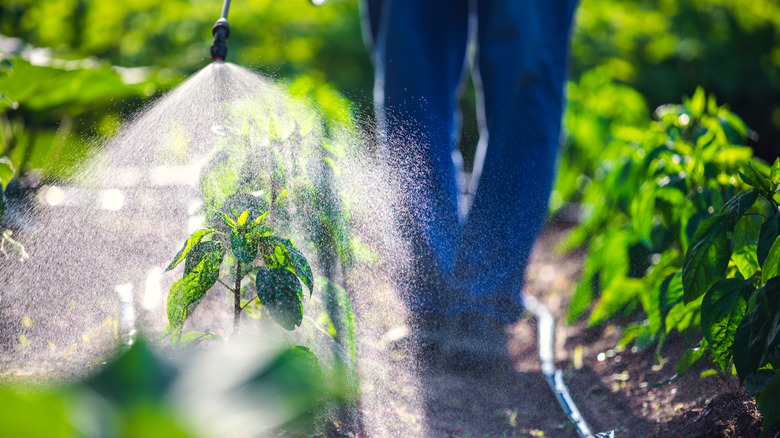Crabgrass, or Digitaria, is an annual grass that is often treated as a weed due to its unsightly appearance (via The Spruce). It gets its nickname from the crustacean-like appearance of the plant, which resembles crab legs. While it is an annual plant, it is particularly tricky to get rid of due to its sprawling growth pattern. It isn’t too noticeable at the beginning of the growing season, but by the summer, it starts to grow rapidly due to the heat and dry air. Then, as it dies out towards the end of the season, it will produce many seeds that will then come up the following year, multiplying across your yard.
While crabgrass isn’t bad for your yard, according to GoodNature Organic Lawn Care, it isn’t the prettiest to look at. This is why many landscapers recommend treating your yard annually with a crabgrass preventer. There are a variety of natural ways to prevent crabgrass, including watering your lawn less, mowing on a higher setting, and removing salt from your yard, but a crabgrass preventer is the best way to avoid it altogether. You have to apply it at the right time for it to be most effective, though. Read on to learn exactly when you should add it to your yard.
Apply from March to May

According to The Spruce, the best time to apply a crabgrass preventer depends on where you live. For example, those in southern regions of the United States may need to apply crabgrass preventer as early as February, whereas those living in northern states can hold off until after the last frost date in May. While some people use the blooming cycle of forsythia bushes to indicate when to apply their crabgrass preventer, it’s best to go off of something more reliable such as soil temperatures.
Crabgrass seeds start to germinate when soil temperatures hold steady at around 55 degrees Fahrenheit. This makes it the best time to apply a crabgrass preventer. You can either use a soil temperature map to get a general sense or use a soil thermometer to get a more specific reading. Crabgrass preventers are available in a variety of forms, including liquid or granular, organic or synthetic, and selective or non-selective. The type of preventer you get will also partially determine when you should apply it, but that varies brand-to-brand, so consult the package instructions for further clarity.

